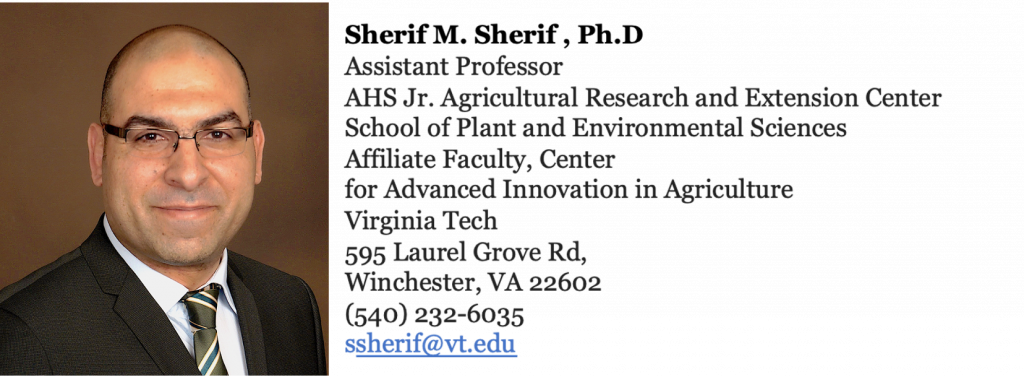The pre-harvest drop refers to the abscission of fruits from the tree before horticultural maturity. Depending on the cultivar and growing season, yield losses due to pre-harvest drop can reach 30%. Factors such as heat and drought stress, heavy insect infestation, and late summer pruning can increase the severity of fruit drop. Early-maturing cultivars (e.g., Gala and Honeycrisp) are usually more prone to fruit drop than late-maturing cultivars (e.g., Fuji and Pink Lady). Ethylene, the ripening hormone, is considered the primary driver of pre-harvest drop, and therefore ethylene inhibitors are used to control the pre-harvest drop in apple orchards. ReTain (from Valent Bioscience) and Harvista (from AgroFresh) are the two ethylene inhibitors labeled for pre-harvest drop control in Virginia. ReTain inhibits the biosynthesis/production of ethylene, whereas Harvista prevents ethylene reception and action. The purpose of this blog post is to share with you the results of two experimental trials we conducted in the 2018 and 2019 seasons to explore the effects of different rates and application timings on the efficacy of these materials.
Over the past four years, we conducted four field trials to explore the optimal timing and rate of ReTain and Harvista and investigate the effects of these materials on fruit drop (%), fruit quality, and stem-end cracking in ‘Gala’ apples. The findings of the 2018 and 2019 seasons were reported in a previous blog post (https://blogs.ext.vt.edu/tree-fruit-horticulture/wp-admin/post.php?post=1919&action=edit), but they can be summarized as follow:
- A full rate of ReTain (333g/acre) applied 3 weeks before the anticipated harvest date was more effective in controlling fruit drop than a half rate (166g/acre), but not significantly different than a double rate (two pouches, 666g/acre).
- There was no significant effect on fruit size and weight when ReTain or Harvista were used.
- Fruits treated with ReTain were firmer than control, but had poor red skin coloration.
- Fruit coloration was not significantly affected by Harvista.
- ReTain applications showed a significant reduction in ethylene content, but it required two applications of Harvista to obtain the same effect.
In 2021, we conducted two other field trials to examine the effects of ReTain (full rate), Harvista (full rate), ReTain (half rate) + Harvista and ReTain (full rate) + Provide (GA4+7) on fruit drop, fruit quality and stem-end cracking. The design and findings of these trials were reported in the following link: https://drive.google.com/file/d/1NL8xa_wK3iTZQa61KEJGCn-qOfG-YYLw/view?usp=sharing
The following is the conclusion of these trials:
- A single application of ReTain (full rate) applied 3 WBH reduced fruit drop (%) compared to control, but was statistically similar to a single or double application of Harvista.
- A double application of Harvista showed better control of pre-harvest drop than the single application, but differences were not statistically significant.
- ReTain applied alone or with ProVide or Harvista reduced fruit coloration compared to control.
- The single or double applications of Harvista didn’t negatively affect fruit skin coloration.
- ReTain alone treatment was more effective than Harvista and ProVide in reducing fruit cracking in Gala.
Note: you may need to copy and past the webpage links in a separate window to open them

